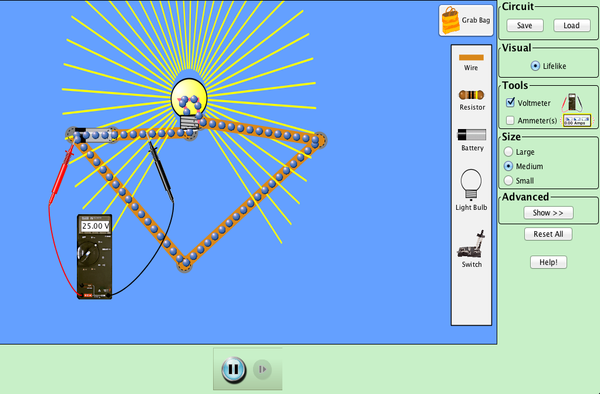Objectives
APPB (REBOOT) (Web view)
After studying the material of this chapter, the student should be able to:1. Explain how a simple battery can produce an electrical current.
2. Define current, ampere, emf, voltage, resistance, resistivity, and temperature coefficient of resistance.
3. Write the symbols used for electromotive force, electric current, resistance, resistivity, temperature coefficient of resistance and power and state the unit associated with each quantity.
4. Distinguish between a) conventional current and electron current and b) direct current and alternating current.
5. Know the symbols used to represent a source of emf, resistor, voltmeter, and ammeter and how to interpret a simple circuit diagram.
6. Given the length, cross sectional area, resistivity, and temperature coefficient of resistance, determine a wire's resistance at room temperature and some higher or lower temperature.
7. Solve simple dc circuit problems using Ohm's law.
8. Use the equations for electric power to determine the power and energy dissipated in a resistor and calculate the cost of this energy to the consumer.
9. Distinguish between the rms and peak values for current and voltage and apply these concepts in solving problems involving a simple ac circuit.

 </
</